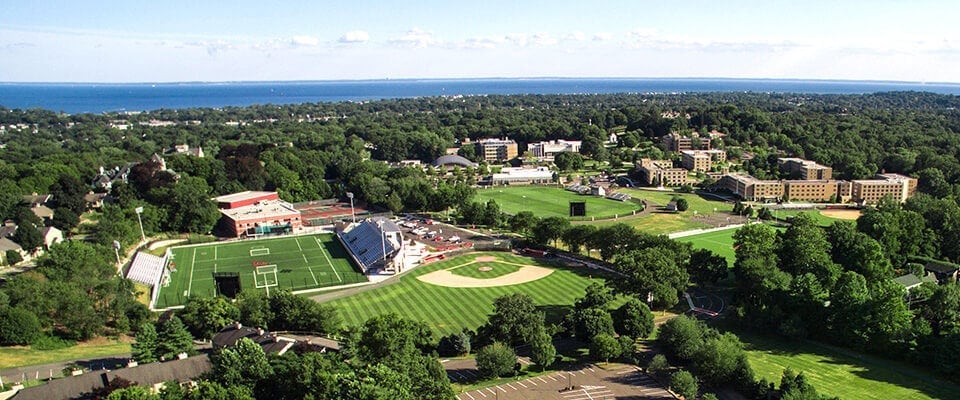As a group that is dedicated to the holistic health of Fairfield, we are particularly concerned about affordable housing for our town work force: many of our teachers, firemen, police officers, and municipal workers cannot afford to live in the town where they work.
Fairfield’s senior population includes those who would like to downsize after retirement, but smaller, single floor homes at reasonable prices are not available. Our two universities are graduating students who have come to love Fairfield during their years here, but they cannot afford to stay.
Having a town that is diverse, rich in community and has multi-generations of families residing can only strengthen Fairfield. We believe a healthy community is one that it is within economic reach of everyone.
Defining affordable
Both our state and HUD define affordable housing using a formula based on percentages of the Area Median Income.
One third of income in those formulas represents what is considered to be affordable dedicated to housing expense. FairPLAN supports that strategy of defining affordability, but we believe that housing based on applying the one third formula to 100 percent of the area median income (currently about $94,000) represents attainable housing that also needs to be available in Fairfield.
Affordable housing should not be isolated
FairPLAN believes that persons needing affordable housing should be able to live in any of Fairfield’s wonderful neighborhoods, and affordable housing should not be clustered in any one area. Operation Hope has a great model of spreading its supply of affordable housing throughout town. That model, however, only works on a small scale.
The Fairfield Housing Authority provides high quality rental units in two developments located in residential areas. The Housing Authority is proposing a third development in the High Street neighborhood.
The newly proposed development has met resistance from neighbors and other residents who have stated their concerns for the development. We know that development can be disruptive to neighborhoods and their concerns are rightful issues that need to be addressed in a cohesive manner. Our town Planning and Zoning Commission has done a great job evaluating all the factors for and against developments similar to the new Housing Authority proposal.
They have approved some and rejected others based on their best judgment of applicable regulations and with due consideration to neighborhood concerns. We support the regulatory process and the careful and deliberative work our Zoning officials do to decide which developments make sense for our town.
Economics play a central role in the development of affordable housing. For multi-unit residential housing, for example, a developer must build enough market rate units to support the lower revenue that comes from the affordable component of a project. This financial reality has led to multi-unit developments of larger scale. Some of the attempts in Fairfield to build very small-scale multi-unit projects have not been successful.
8-30g
Our state mandates affordable housing using a harsh regulation known as 8-30g. This regulation allows developers to avoid most zoning regulations as long as their projects do not create substantial health or safety problems. 8-30g has been misused by some developers to build oversize projects in areas where they simply do not belong.
Fairfield is attempting to counter the negative effects of 8-30g by mandating that all residential development of ten or more units be at least 10 percent affordable. Consideration is also on-going to allow smaller apartments that will be rentable at lower costs. It appears that this strategy is working, and Fairfield is likely to achieve a moratorium from 8-30g, as some other towns have, within the next couple years.
Fairfield is unfairly targeted under the 8-30g statute because it calculates our town as having only 2.5 percent affordable housing stock. We have far more than 2.5 percent, but those residence units do not fit 8-30g’s unreasonable definition. Nevertheless, Fairfield does need more affordable housing. It is vital to the general economic vitality as well as fulfilling the needs of our citizen’s changing housing needs (seniors want smaller housing in town; students want to stay in town, etc.) we need to increase our affordable and attainable housing stock.
Sustainability
Too little attention has been given to sustainable development and making Fairfield sustainable. It would be a vast understatement to say the world is facing a climate crisis, and towns and cities like Fairfield produce vast amounts of emissions and pollution, hurting both human and ecological well-being.
FairPLAN believes that far more needs to be done to encourage “green” building practices and methods using sustainable materials and focus on energy efficiency initiatives. We need more solar power for residential developments and more use of water conservation technologies. Equally, we need to commit to new tree plantings, which are a vital part of our ecosystem.
FairPLAN is committed to Fairfield, its ecosystem and neighbors and we see ourselves as partners in ensuring our community is a thriving place to live. We view our role as collaborative stewards and we strive to work with neighborhood groups, agencies and government officials for the greater good. Together, we can do more.
Source: ctmirror






